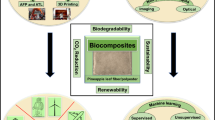Summary
The behavior of two-dimensional woven SiC/SiC ceramic matrix composite (CMC) is studied by numerical simulations based on the finite element method (FEM). Starting point of the investigations is a micromechanical model regarding a three-dimensional unit cell, which takes damage and fracture of the single components—fiber bundles and inter yarn matrix—into account. The scattering of the strength values which is characteristic for ceramic material is involved using Weibull distribution. In a first step the unit cell regarded within the simulations is cooled down to consider the residual thermal stresses resulting from the fabrication process. In a second step the unit cell is subjected to tensile loading and its behavior—especially the influence of the scattering of the strength values—is studied. To be able to estimate the influence of important parameters on the behavior of the composite a macrostructure is built up using the results obtained for a large number of unit cell. Thus an averaging effect is reached and the behavior obtained for the macrostructure should be characteristic for the composite. Doing so, the influence of the fiber volume fractionv f and the fiber Weibull modulM f on the composite behavior can be studied.
Similar content being viewed by others
References
Guillaumat, L., Lamon, J.: Probabilistic-statistical simulation of the nonlinear mechanical behavior of a woven SiC/SiC composite. Composite Science and Technology56, 803–808 (1996).
Pluvinage, P., Quenisset, J. M.: Numerical simulation of the tensile behavior of 2D-SiC/SiC crossply laminates. Journal of Composite Materials27, 152–174 (1993).
Kou, W.-S., Chou, T. W.: Nonlinear thermomechanical behavior of woven ceramic composites. Proceedings of The American Society for Composites. Sixth Technical Conference, 611–620, Albany 1991.
Ismar, H., Streicher, F.: Modelling and simulation of the mechanical behavior of ceramic matrix composites as shown by the example of SiC/SiC. Computational Materials Science16, 17–24 (1999).
Altenbach, H., Altenbach, J., Rikards, R.: Einführung in die Mechanik der Laminat- und Sandwichtragwerke. Stuttgart: Deutscher Verlag für Grundstoffindustrie 1996.
Puck, A.: Praxisgerechte Bruchkriterien für hochbeanspruchte Faser-Kunststoff-Verbunde. Kunststoffe82, 149–155 (1992).
Nahas, M. N.: Survey of failure and post-failure theories of laminated fiberreinforced composites. Journal of Composites Technology and Research8, 138–153 (1986).
Cuntze, R., Deska, R., Szelinski, B., Jeltsch-Fricker, R., Meckbach S., Huybrechts, D., Kopp, J., Kroll, L., Gollwitzer, S., Rackwitz, R.: Neue Bruchkriterien und Festigkeitsnachweise für unidirektionalen Faserkunststoffverbund unter mehrachsiger Beanspruchung-Modellbildung und Experimente. VDI Fortschritt-Berichte Reihe 5,506 (1997).
Knaust, U.: Zur Analyse und Optimierung von Faserverbund-Leichtbauteilen. VDI Fortschritt-Berichte Reihe 2,11 (1988).
Tietz, H.-D.: Technische Keramik: Aufbau, Eigenschaften, Herstellung, Bearbeitung, Prüfung. Düsseldorf: VDI-Verlag 1994.
DeBorst, R., Nauta, P.: Non-orthogonal cracks in a smeared finite element model. Engineering Computations2, 35–46 (1985).
Ismar, H., Reinert, U.: Modelling of the micromechanical behavior of unidirectional fibre-reinforced ceramics by the example of SiC/SiC, Archive of Applied Mechanics66, 34–44 (1995).
Baste, S., El Guerjouma, R., Audoin, B.: Effect of microcracking on the macroscopic behavior of ceramic matrix composites: Ultrasonic evalution of anisotropic damage. Mechanics of Materials14, 15–31 (1992).
Droillard, C., Lamon, J.: Fracture thoughness of 2-D woven SiC/SiC CVI-composites with multilayered interphases. Journal of The American Ceramic Society79, 849–858 (1996).
Pluvinage, P., Parvizi-Majidi, A., Chou, T. W.: Damage characterization of two-dimensional woven and three-dimensional braided SiC−SiC composites. Journal of Materials Science31, 232–241 (1996).
Naslain, R.: Fibre-matrix interphases and interfaces in ceramic matrix composites processed by CVI. Composite Interfaces1, 253–286 (1993).
Puck, A.: Festigkeitsanalyse von Faser-Matrix-Laminaten: Modelle für die Praxis. München: Carl Hauser Verlag 1996.
Lamon, J., Lissart, N., Rechiniac, C., Roach, D. H., Jouin, J. M.: Micromechanical and statistical approach to the behavior of CMC's. Ceramic Engineering and Science Proceedings14, 1115–1124 (1993).
Ismar, H., Reinert, U.: Modelling and simulation of the macromechanical nonlinear behavior of fibre-reinforced ceramics on the basis of a micromechanical-statistical material description. Acta Mech.120, 47–60 (1997).
Author information
Authors and Affiliations
Additional information
Dedicated to Prof. Dr.-Ing. Dr.-Ing. E. h. mult. Oskar Mahrenholtz on the occasion of his 70th birthday
Rights and permissions
About this article
Cite this article
Ismar, H., Schröter, F. & Streicher, F. Influence of the fiber volume fraction and the fiber Weibull modul on the behavior of 2D woven SiC/SiC — a finite element simulation. Acta Mechanica 149, 41–54 (2001). https://doi.org/10.1007/BF01261662
Received:
Revised:
Issue Date:
DOI: https://doi.org/10.1007/BF01261662




